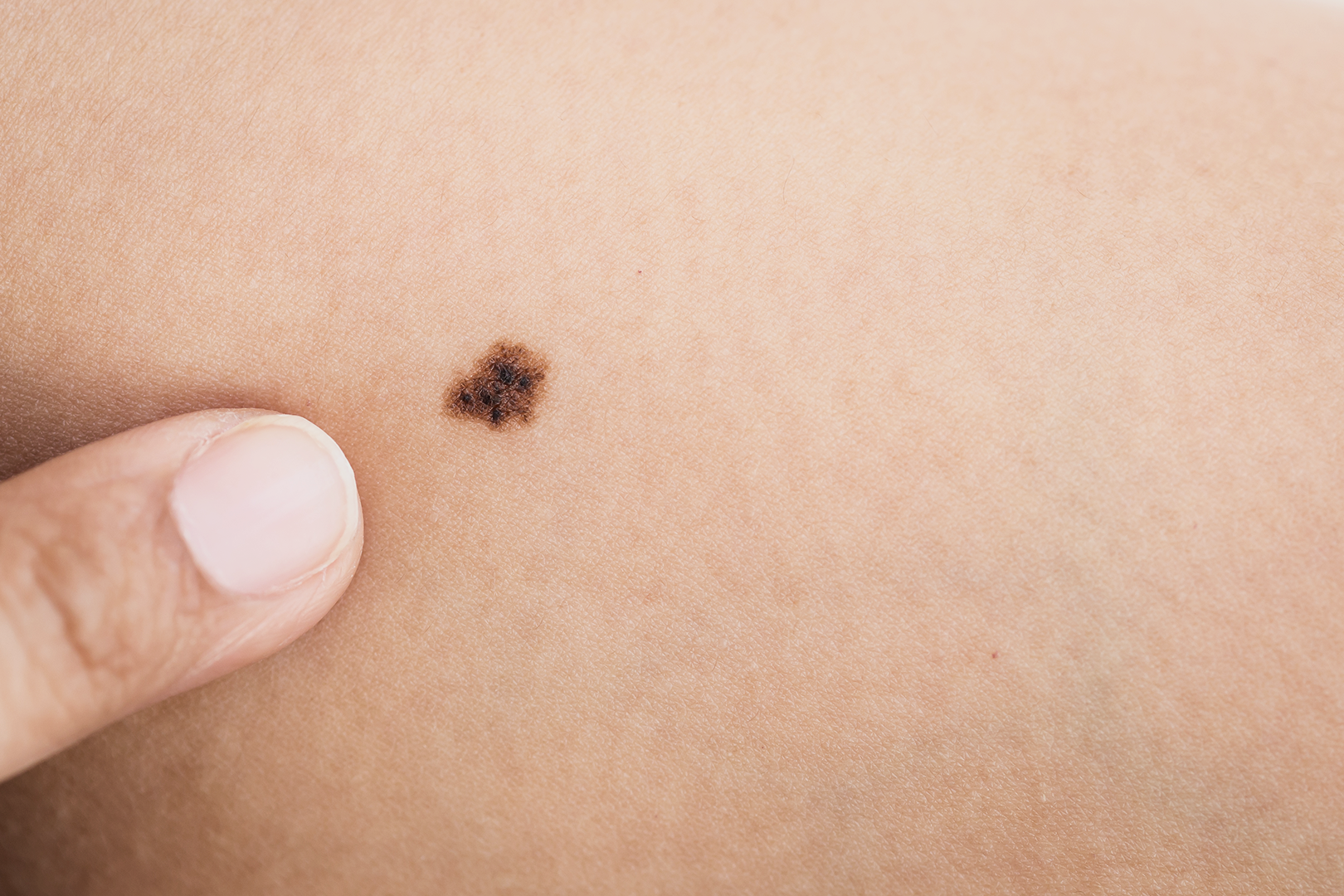Did you know that UV rays can reach you even under the shade and cause the types of skin cancer? Learn how to protect yourself!
The ultraviolet rays are among the greatest risks during the summer. They are the ones that cause the main types of skin cancer, a disease with more than 165 thousand cases per year in Brazil.
Even in places under intense shade can be affected by the UV radiation, which is reflected by the sand, the ocean water and light-colored surfaces.
- Tip: If you plan to spend the day under a parasol, do not choose the models made with nylon, because this material allows 95% of the UV rays to reach your skin without you even realizing it.
Always remember to wear sunscreen and follow our tips below!
What are the types of skin cancer?
Skin cancer may be non-melanoma or melanoma, which develops according to the kind of cell that is attacked by the tumor.

Non-Melanoma Skin Cancer
These types of skin cancer are classified into two subtypes: the BCC (Basal Cell Carcinoma) and the SCC (Squamous Cell Carcinoma). They represent 95% of the cases and are less severe.
Learn about them:
- The BCC looks like a reddish lump with a central crust that can bleed occasionally.
- The SCC appears when the skin presents symptoms such as wrinkling, change in pigmentation and elasticity, having the appearance similar to a wart – it is twice more common among men than among women.

Melanoma Skin Cancer
Even though it represents only 5% of the cases, this is the most aggressive type of skin cancer, because it develops metastasis and it is highly lethal.
The melanoma looks like a mole or a light or dark brown skin spot, and it may even bleed.
MEven being so dangerous, melanoma can have great chances of cure if it is discovered in its early stages.
Is skin cancer hereditary?
Don’t think that skin cancer develops only due to ultraviolet radiation.
Some cases can happen due to heredity, mainly by 1st degree family members who have already had the disease.
If this is your case, visit a dermatologist on a yearly basis.

Learn about the ABCDE skin cancer rule
One of the ways of knowing if you have any of the types of skin cancer is conducting a self-exam. And to know if there is anything wrong, use the ABCDE rule, which is very simple to memorize:
A for Asymmetry
when one half of the mole is different from the other half
B for Border Irregularity
which may be a sign of malign cancer
C for Color Variation
if the spot is black, brown, white, reddish or blue
D for Diameter
if it is larger than 6 mm
E for Evolution
when the spot changes size, shape or color
If you feel itchy, notice some scaling or bleeding in a spot or mole, or if you have a bruise that hasn’t healed for more than 4 weeks, seek a dermatologist immediately.
How to protect yourself from skin cancer
Do you want to block the risks of UV rays? It’s not difficult. Just follow simple steps daily:
- Apply sunscreen with FPS 30 or more, besides lip balms, 20 minutes before leaving home, reapplying it every 2 hours – even if the day is cloudy;
- Avoid the sun between 10am and 4pm, because this is when the radiation of UV waves is more intense;
- If the children play outdoors, remember to apply sunscreen;
- Examine your entire body on a regular basis – mainly in the areas which are more exposed to the sun;
- Wear a broad-brimmed hat and glasses with lenses that block UV rays;
- Visit a dermatologist, at least once a year.


Have you noticed anything different on your skin? Do not stand in the shade. Seek a doctor immediately.
- QDo you want to enjoy the summer much more? Check out: 3 Simple Tips to Start Doing Physical Exercises!
Do you want to learn more about health and quality of life? Follow our social media!




